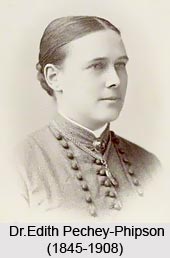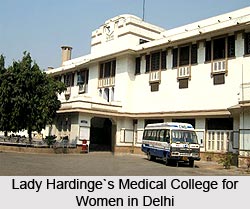 Women and medicine were two extremely contradicting terms during pre-independent India. Women were known to excel in household work, staying ignorant to outside developments. However, as years progressed towards a free India and with the advent of the two World Wars, women were seen to enthusiastically take part in medical courses and medicine. In assistance with English women to stand out in this field also, the contribution of women in medicine in the said times were indeed surprising.
Women and medicine were two extremely contradicting terms during pre-independent India. Women were known to excel in household work, staying ignorant to outside developments. However, as years progressed towards a free India and with the advent of the two World Wars, women were seen to enthusiastically take part in medical courses and medicine. In assistance with English women to stand out in this field also, the contribution of women in medicine in the said times were indeed surprising.
Within the period of 1875-87, medical education for women began first at Madras Medical College and then was made available in 1885 at the Medical College of Calcutta and in 1887 at Grant Medical College in Bombay.
In 1880, Fanny Butler became the first British woman to practice medicine in India with postings at Jubbulpore (present-day Jabalpur, Madhya Pradesh), Bhagalpur and then in Kashmir. She served as a member of the Church of England Zenana Missionary Society and conducted pioneering medical work among Indian women.
In 1885, the Countess of Dufferin`s Fund was created for the purpose of bringing women doctors to India, to open women`s hospitals and wards and to train Indian women in medicine. This very noble move on the part of British government was the single guiding line towards a significant contribution of women in medicine and beyond.
In August 1886, the Cama Hospital for Women and Children opened in Bombay under the supervision of Dr. Edith Pechey-Phipson (1845-1908).
In 1894, the Women`s Christian Medical College at Ludhiana offered training for women doctors and Indian women as medical missionaries.
 In the span of 1903-1912, Lady Mary Victoria Curzon (1870-1906) established the Victoria Memorial Scholarship Fund for the training of Indian women as midwives. By 1912 the programme had initiated operations in fourteen provinces and had prepared 1395 midwives. These stellar examples wholly highlight the enthusiastic contribution of Indian women in medicine and other associated works, even in times of stress or poor funding. British help did come to great aid, with women looking towards a brighter side of medicine and medical emergencies.
In the span of 1903-1912, Lady Mary Victoria Curzon (1870-1906) established the Victoria Memorial Scholarship Fund for the training of Indian women as midwives. By 1912 the programme had initiated operations in fourteen provinces and had prepared 1395 midwives. These stellar examples wholly highlight the enthusiastic contribution of Indian women in medicine and other associated works, even in times of stress or poor funding. British help did come to great aid, with women looking towards a brighter side of medicine and medical emergencies.
In 1907, the Association of Medical Women in India was founded under the leadership of Dr. Annette Benson of the Cama Hospital at Bombay. The organisation proposed to advance the interests of medical women in India.
On 1st January 1914, the Women`s Medical Service was established by the Government of India and administered and financed by a revised Central Committee of the Dufferin Fund. The new service supplied medical relief to that segment of Indian women who for social or religious prejudice were unable to go to an ordinary hospital.
During the spring months of 1916, the Lady Hardinge`s Medical College for Women in Delhi opened as the first training college for Indian medical women. A curious point that can derived from these illustrations is that in spite of every kind of opposition and social and political causes hindering medical progress, Indian women`s contribution to medicine increased by the day. And the very fact of tumultuous conditions further heightened the need of medical help from every part of the country.
In 1920, the founding of the Lady Chelmsford League for Maternity and Child Welfare provided a means by which Indian women could be educated through books, pamphlets, leaflets, slides, posters, etc.
As a significant concluding move to the contribution of women in medicine in the middle years of 20th century, the First All-India Conference of Medical Women convened in Delhi in 1938. The principal subjects addressed included anaemia and eclampsia.



















